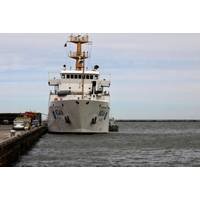
Europe Moves On as US Lets Science Slide
Efficiency cuts.The White House 2026 budget plan seeks to shrink NOAA even further, proposing a $1.8 billion cut, or 27% of the agency's budget, and a near-20% reduction in staffing, bringing down the NOAA workforce to 10,000.The budget proposal would eliminate the Office of Oceanic and Atmospheric Research, NOAA's main research arm, which is responsible for ocean observatory systems including Argo, coastal observing networks, satellite sensors and climate model labs.It is also reducing its data products. Between April and June, NOAA announced on its website the decommissioning of 20 datasets

Fugro Gifts Survey Equipment to CSIRO to Bolster Australian Ocean Research
deep-sea mapping and the study of biodiversity in deepwater benthic habitats.“We sincerely thank Fugro for their generous donation of these systems which will further enhance the impressive scientific capabilities that CSIRO research vessel Investigator offers to the Australian marine and atmospheric research community,” said Toni Moate, CSIRO Marine National Facility Director.“Fugro is delighted that CSIRO will be incorporating this into the already extensive capabilities of the Investigator research vessel. We are excited by the research opportunities that this deep tow equipment
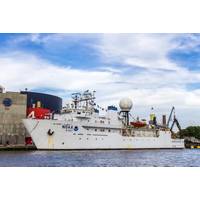
White House Aims to Eliminate NOAA Climate Research
the U.S. fisheries service to support energy development, according to a draft White House budget document seen by Reuters.The moves are part of a plan to downsize NOAA dramatically, slashing agency funding by around $1.67 billion, or 27%, according to the proposal.The Office of Oceanic and Atmospheric Research, known also as NOAA Research, would be closed under the proposal, along with $480 million in funding for regional climate data and information, agency research laboratories, and cooperative institutes, among other programs.NOAA, a division of the Department of Commerce, is a scientific agency
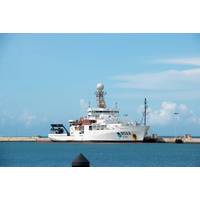
Trump Moves to More Easily Fire NOAA, DOE Employees
be expected to support the administration's agenda, the email to fisheries staff said.The NOAA staff who received notification that they are on the preliminary list are supervisory researchers at offices including the National Environmental Satellite, Data, and Information Service; Oceanic and Atmospheric Research; National Ocean Service; and Office of Marine and Aviation Operations, according to a source familiar with the situation.Trump attempted to reclassify thousands of federal workers at the end of his first term, an effort supported by Russell Vought, his then and current director of the Office
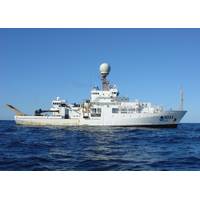
Markey Wins Deal to Refurbish Winches for NOAA Research Vessel
sheaves. Mechanical actuation, by use of a hand-wheel directly coupled to the diamond screw, significantly reduces overall level-wind cost, as well as complexity, in the absence of extra sensors, motors, and VFDs. Markey will complete work in 2024.Commissioned in 1997, the oceanographic and atmospheric research vessel Ronald H. Brown measures 274 feet long and displaces more than 3,200 tons, making it the largest ship in the NOAA fleet. The vessel is equipped with a suite of instruments for collecting and assessing scientific data above and below the ocean surface. Onboard cranes and winches enable
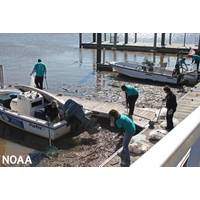
US Announces $19 Million to Tackle Marine Debris
a Sea Grant Program, and partnerships are encouraged.“Through the Challenge funding opportunity, we will support innovative research that can readily and immediately be applied to prevent and remove marine debris,” said Steve Thur, Ph.D., NOAA assistant administrator for Oceanic and Atmospheric Research. “The goal is that the techniques developed by these awards can be broadly applied to locations around the country, multiplying the environmental and economic impacts of the funding well beyond marine debris removal at a single site."“With the Community Action funding, we

Record Low Antarctic Sea Ice is Another Alarming Sign the Ocean’s Role as Climate Regulator is Changing
will only delay the inevitable. As the Intergovernmental Panel on Climate Change put it in its latest report:There is a rapidly closing window of opportunity to secure a liveable and sustainable future for all.The authorCraig Stevens, Professor in Ocean Physics, National Institute of Water and Atmospheric Research(Source: The Conversation
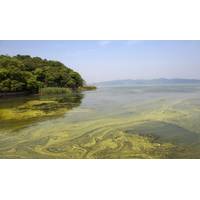
NOAA Awards $18.9 Million for Harmful Algal Bloom Research, Monitoring
Ocean Science (NCCOS) and the U.S. Integrated Ocean Observing System (IOOS) Office within NOAA’s National Ocean Service to advance our nation's ability to observe, monitor, forecast and manage blooms. NOAA's Ocean Acidification Program (OAP), under NOAA’s Office of Oceanic and Atmospheric Research, has also partnered with NCCOS to advance understanding of interactions between acidification and HABs in coastal waters and the Great Lakes.NCCOS has allocated $16.1 million to fund harmful algal bloom research in fiscal year 2022, including $3.3 million for six new research awards, $10.4
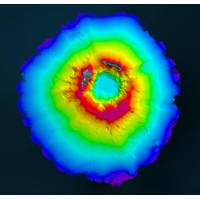
Teledyne Geospatial Partners with Seabed 2030 to Study Submarine Impacts of Volcanic Eruption in Tonga
Teledyne Geospatial announced it has partnered with Seabed 2030 in the Tonga Eruption Seabed Mapping Project (TESMaP).In April this year, New Zealand’s National Institute of Water and Atmospheric Research (NIWA) and The Nippon Foundation announced a mission to discover the undersea impacts of the Hunga-Tonga Hunga-Ha'apai (HT–HH) volcanic eruption, which produced the biggest atmospheric explosion recorded on Earth in over a century. Supported by The Nippon Foundation-GEBCO Seabed 2030 Project, TESMaP had two phases, led by NIWA: phase one saw scientists survey the area around the

 December 2025
December 2025





